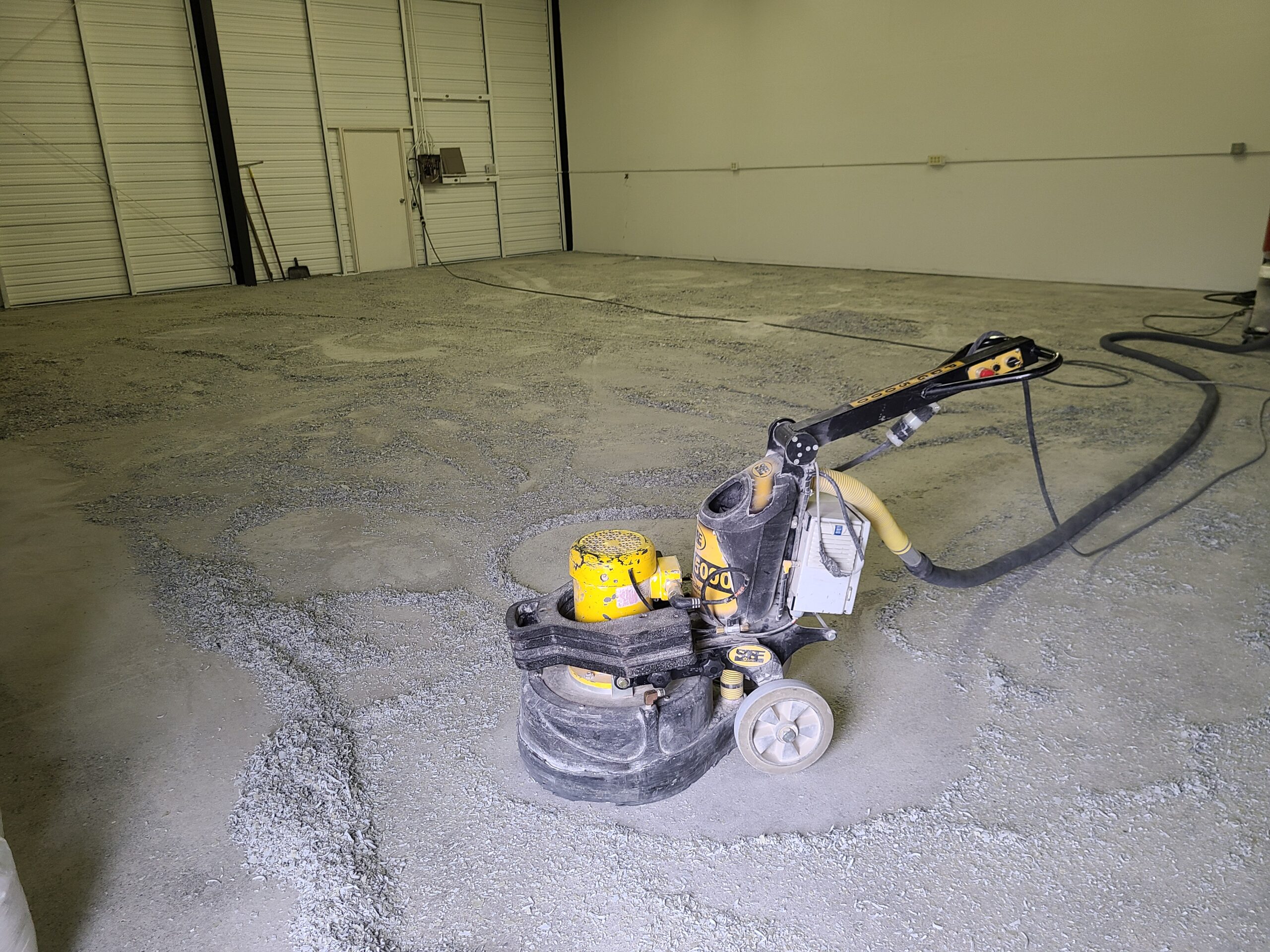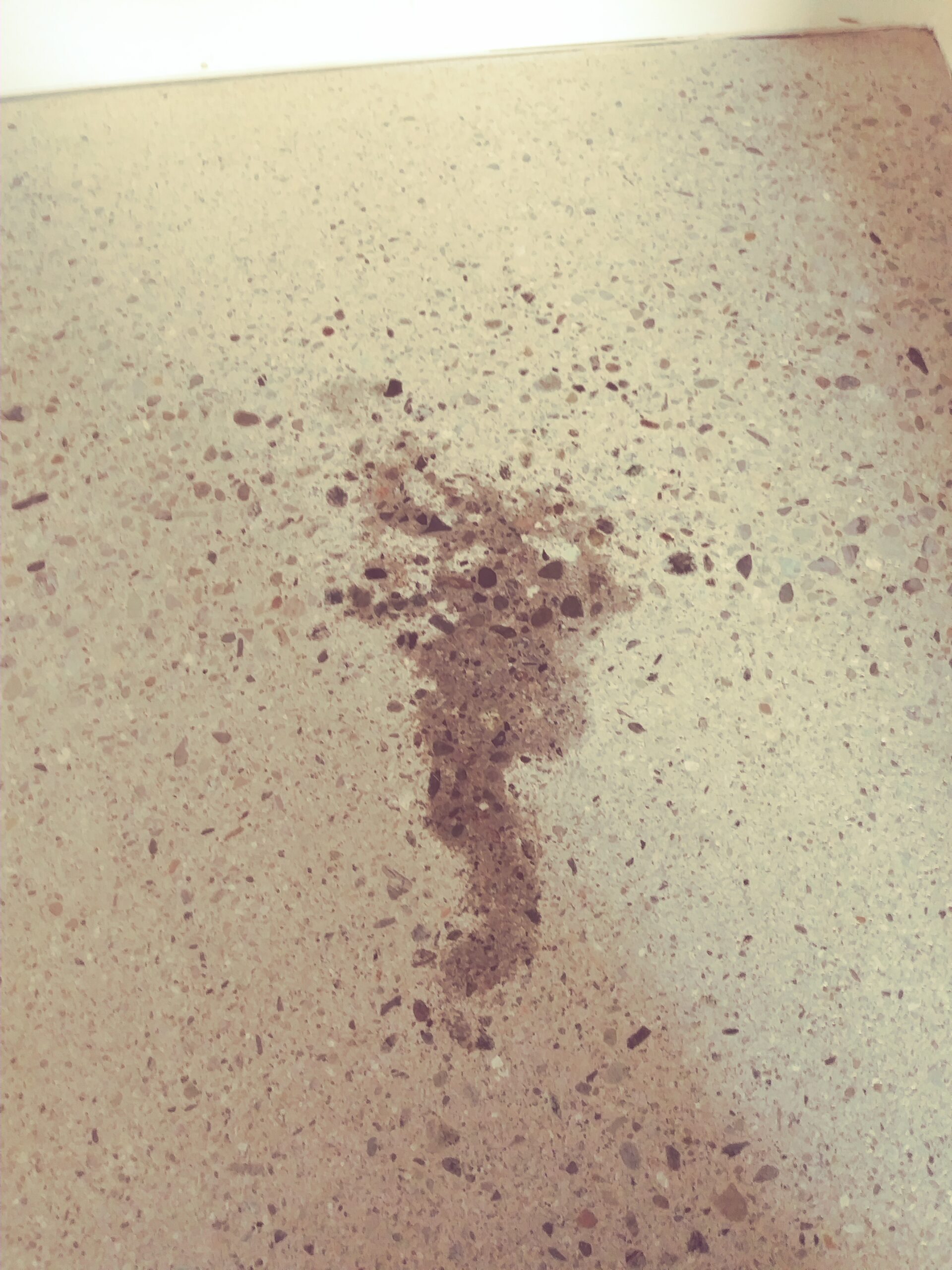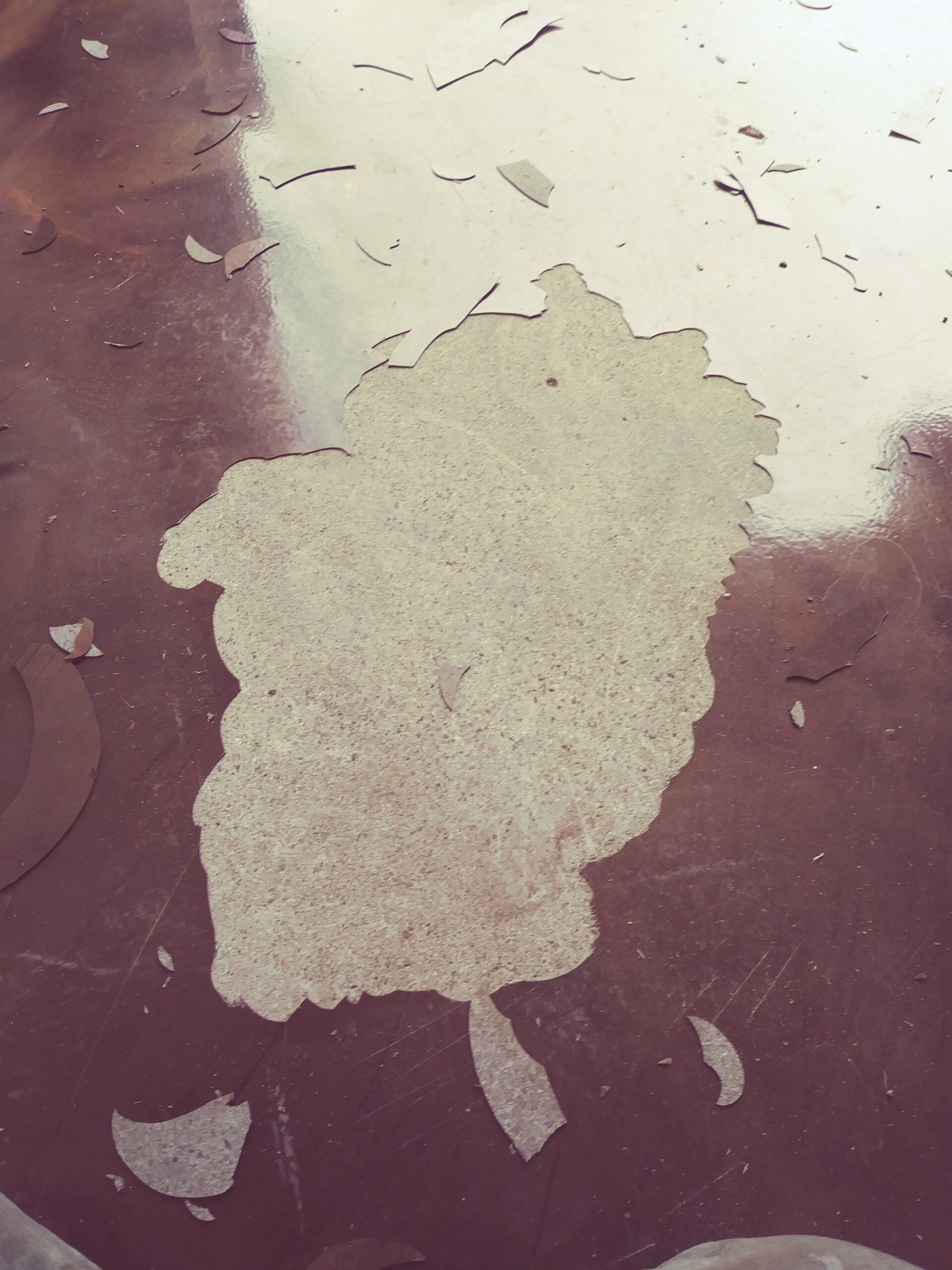Top Reasons Why Epoxy Coatings Fail
Epoxy coatings can be a great way to protect your concrete. Whether it is a residential garage, a commercial kitchen or an industrial warehouse, one of the sad realities of this industry is that these coatings can be subject to failure. We get many calls asking us if we can repair failing coatings and the answer is almost always, the same; it needs to be removed and the install done again from the start. Here is a list of some of the most common causes of coating failure.
Improper Surface Preparation:

Epoxy coatings need a surface profile to bond to. Shot basting and grinding are the two most common methods for achieving this. This process not only creates the CSP or concrete surface profile needed for the coating to stick, but also removes the weak cream as well as contaminates on the surface of the concrete so that the material the epoxy is bonding to is actually sound.
Many box store DIY epoxy kits come with an acid to ‘etch’ the surface. If you are a DIY’er and don’t own thousands of dollars in surface prep equipment, this seems like a good option. The problem is, it almost never works. Hard troweled slabs or concrete with sealers will keep the acid from doing anything at all and even when these aren’t present, acid still doesn’t create the needed surface profile for epoxy to bond well. Making matter worse, acids are often not neutralized correctly and when they are, coatings are often installed before the concrete has had a chance to dry thoroughly. Sales and use of DIY kits recommending acid etching for prep makes lack of proper surface prep one of the main reasons why epoxy coatings fail.
Even installers with expensive equipment can fail to achieve the proper CSP by running grinding equipment too fast or with the wrong tooling and polishing the surface instead of opening it up and creating a profile.
Contaminates:

Even with the proper surface profile, epoxy coatings can fail if there are ‘bond breakers’ present. Many products can penetrate into the pores of concrete. Even after proper prep they can cause the coating to fail to bond. This can happen almost immediately, or occasionally, they can wick to the surface over time eroding the bond between the epoxy and the concrete resulting in a failure.
Fatty acids such as those present in commercial kitchens, mineral oils, gasoline, petroleum distillates and silicone based products are just a few. Not treating these correctly in the prep process is a top reason why epoxy coatings fail. Treatments can include something simple like the use of a solvent. They can also be more complex like using a a hydrocarbon eating bacteria to remove oil. There are also a number of specialized primers that allow epoxy coatings to be installed over contaminated surfaces without issue.
Humidity

Professional epoxy products are often solvent based. This means one of their natural enemies is moisture. For successful epoxy applications understanding humidity and dew point are crucial to preventing failures.
Dew point is the temperature when humidity in the air turns to condensation on surfaces. Concrete is porous. It has a tendency to absorb moisture. This can cause problems when epoxy is installed, unless the epoxy is water based. The most common of these problems would be a poor bond to the surface. Just like oil and fatty acids can be bond breakers, surface moisture, which often times isn’t even visible to the naked eye, can weaken the bonding properties of the epoxy and eventually lead to a delamination.
Even if the epoxy achieves a decent bond with the presence of surface condensation, you still run the risk of developing amine blush. When condensation forms on an epoxy before it is fully cured, it can react with the curing agents and carbon dioxide in the atmosphere resulting in an oily film on the surface. This might not affect the overall strength of the material, but it can be visually unappealing. It can also drastically affect subsequent coats of epoxy or top coat materials from bonding properly. The general rule of thumb is to never install a solvent based epoxy when the temperature is within five degrees of the dew point.
Poor Bond Strength

Achieving a good bond between the epoxy and the concrete surface is vital to avoiding failures. Surface preparation is key to creating profile and help in removing contaminates. Understanding dew point will help prevent condensation related bonding failures. But there are other factors to consider as well.
Use of a high quality product that penetrates or wets out the surface helps in creating a strong floor. Low solids, thin build materials tend to dry quickly and sit on the surface. Likewise, some of the fast cure ‘one day garage floor’ polyaspartics can dry too quickly. This doesn’t allow the material adequate time to penetrate the surface and create a strong bond.
Ideally, the coating will have a bond strength that is stronger than the concrete itself. Occasionally, we see failures where the coating has delaminated and the back of the epoxy has concrete on it. (See above image) This in indicative of a coating that has a bond strength stronger than the concrete itself. Coatings installed on super soft concrete can result in a failure of the concrete releasing the coating with pieces of substrate still attached. This isn’t a failure of the coating. In actuality, it is a failure of the substrate.
Moisture

As we already mentioned, solvent based epoxies don’t like moisture. While this is true of surface moisture, it is also true of moisture vapor transmission (MVT) and also of hydrostatic pressure. We like to think of concrete a solid material, but in actuality, it isn’t, at least not when it comes to moisture.
The original water present in a concrete mix evaporates leaving behind voids and capillaries as it cures. These voids allow the movement of moisture to the surface. An impermeable epoxy coating traps this moisture as it reaches the surface and there is no where for it to go. This often results in bubbles or blisters forming under the coating.
Although occurring less often, the same is true when hydrostatic pressure is present. When the water table in the ground rises above a concrete surface it creates pressure. High pressure and porous concrete can allow water to come through the surface. A coating will trap this water just as it traps MVT resulting in a weakened bond, blistering, and ultimately a failure.
Moisture vapor and hydrostatic pressure are high on the list of reasons why epoxy coatings fail. Standard epoxy materials not specifically designed to deal with moisture, can’t work effectively when either are present and will fail. Roughly a billion dollars is spent on moisture related flooring failures each year. Taking a RH (relative humidity) reading before a coatings project begins, can help identify moisture problems. Then using a material suitable for the level of moisture present, helps to avoid these types of failures.
Mixing Issues
Most high quality epoxies are a two component material consisting of a resin and a hardener. These two materials, when combined properly, produce an exothermic reaction. This results in the chemical components cross linking to form a very hard and durable surface. If the ratio of resin to hardener is off, or if the material is not mixed long enough or well enough, it can weaken the cross linking resulting in a weaker surface. This can also slow down the cure time. A floor can remain soft or sticky for an extended period of time. Epoxies can also fail to harden at all in a worst case mixing scenario where the sticky mess has to be removed.
A clean, well organized mix station can help reduce the chance of human error. The person mixing needs a clear understanding of the material being used, its mix ratio, and any special mixing protocols. Not all epoxies are a 2:1 mix ratio, and some require mixing at lower speeds for longer periods. This helps avoid air entrapment in the material that may cause bubbles, craters or pinholes in the surface after it cures out.
While this isn’t a comprehensive list of everything that can go wrong in the coating industry, these are the most common reasons why epoxy coatings fail. Understanding of each of these, and taking the proper steps to deal with them, will drastically reduce the chance of having a floor failure. For more information on our floor coatings please give us a call at (425) 586-0706.
Tags In
Related Posts
Categories
- Acid Etch (2)
- Acid Stains (1)
- Acrylic (1)
- Basement Flooring (5)
- Broomed Overlay (1)
- Commercial Flooring (15)
- Commercial Kitchens (4)
- Concrete Dyes (5)
- Concrete Resurfacing (17)
- Decorative Concrete (16)
- Decorative Concrete Coatings (16)
- Designer Epoxy Flooring (5)
- DIY Epoxy Kits (3)
- Embedded Logos (2)
- Epoxy (15)
- Epoxy Broadcast Floors (1)
- Epoxy Coatings (7)
- Epoxy Flooring (6)
- Epoxy Floors (6)
- Epoxy Mositure Barrier (4)
- Epoxy Paint (4)
- Featured Post (6)
- Flexible Epoxy (1)
- Fluid Applied Floors (3)
- Food Processing (2)
- Garage Floor Coatings (7)
- Hand Troweled Floors (1)
- Hot Tire Pick Up (2)
- Integral Cove Base (1)
- Loading Docks (1)
- Metallic Epoxy (5)
- Metallic Marble Stains (2)
- Micro-toppings (10)
- Moisture Mitigation (2)
- Plywood Sub-Floors (1)
- Polyaspartic (9)
- Polyurethane (7)
- Seamless Floors (13)
- Spray-on Overlay (1)
- Stained Concrete (5)
- Stamped Concrete (4)
- Stencils (3)
- Thermal Shock (1)
- Uncategorized (3)
- Urethane Cement (3)
- Water Damage (1)
- Waterproof Concrete Decking (1)
